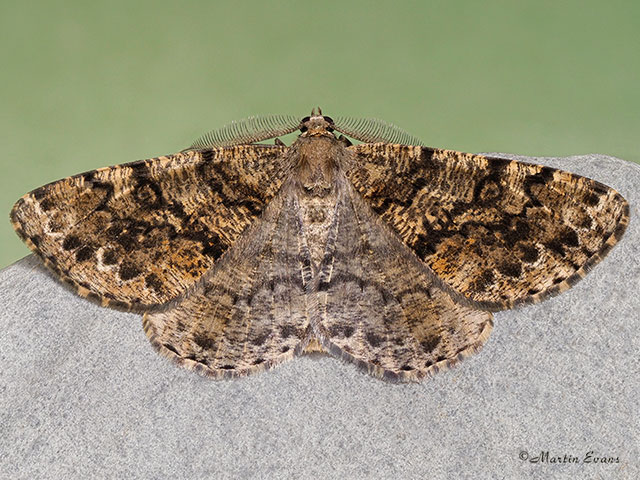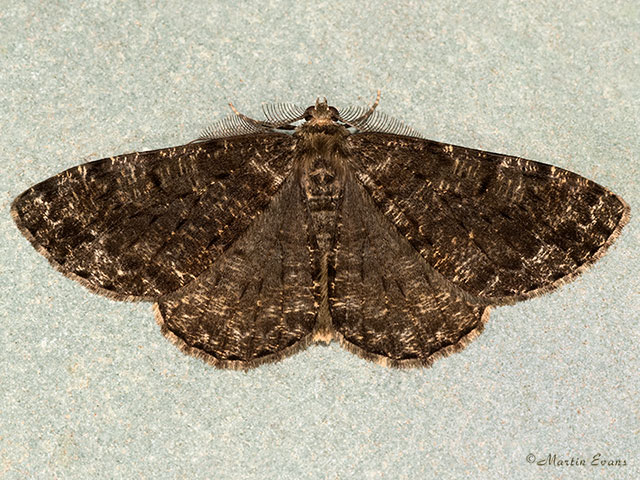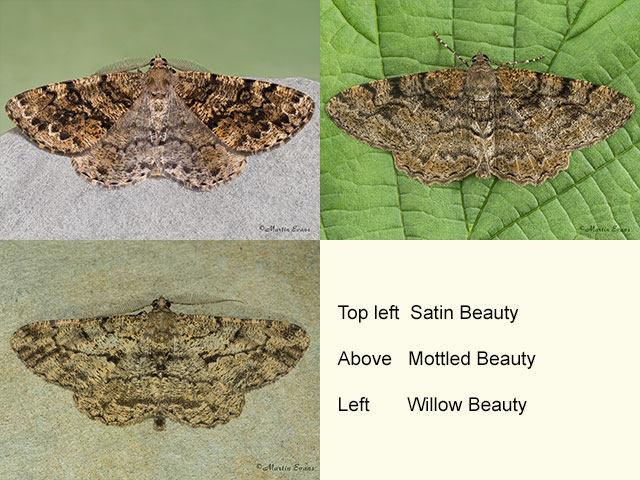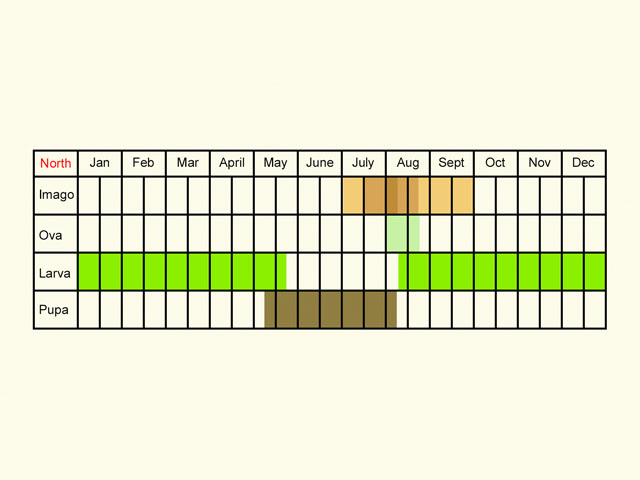Geometridae
70.264 Satin Beauty Deileptenia ribeata (Clerck, 1759)
Common
Similar species: Mottled Beauty Alcis repandata has narrower antennae, more pointed forewings with two smooth outward curves in the outer central cross-line and deeper scallops on the outer edge of the hindwings. Willow Beauty Peribatodes rhomboidaria has a straighter leading edge to the forewing, which has a pale square at the wing tip on the underside and a less prominent scalloped outer cross-line.
The rare migrant Olive-tree Beauty Peribatodes umbraria has a whitish background colour and a large dark blotch between the central cross-line and the outer central cross-line at the trailing edge. The now rare migrant Feathered Beauty Peribatodes secundaria has even broader antennae and the forewing outer cross-line bows outwards towards the trailing edge. The rare migrant Lydd Beauty Peribatodes ilicaria has slightly less broad antennae, the leading edge of the forewing is straighter and the wing more pointed, the forewing outer cross-line bows outwards towards the trailing edge and a pale square on the underside of the wing tip may be present.
Forewing: 18 to 26mm
Habitats: Conifer plantations, coniferous woodland, deciduous woodland margins and downland where mature Yews or conifers are growing.
Habits: The moth comes to light.
Foodplant: The larva feeds on Scots Pine, Yew, Norway Spruce, Douglas Fir, European Larch and other pines. It is also reported to feed on deciduous trees, including oaks and birches. It pupates in loose soil.





